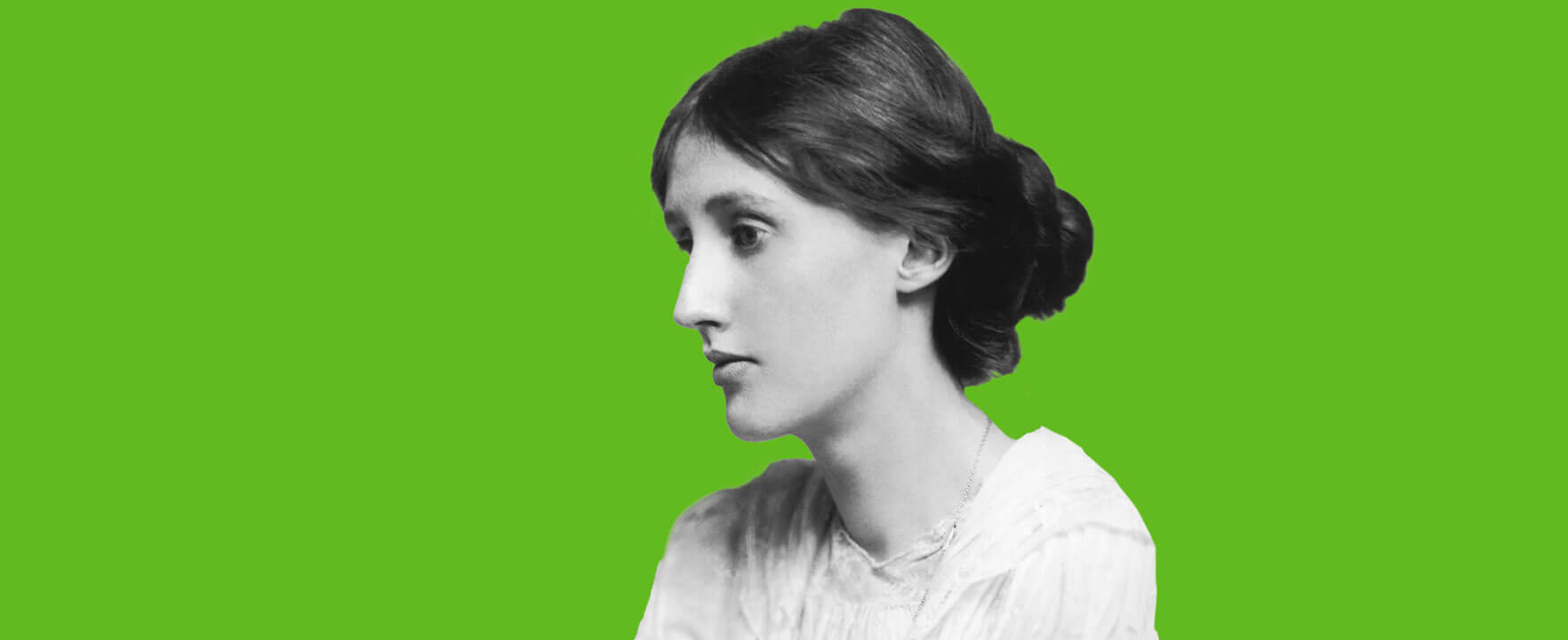Virginia Woolf is considered one of the most important modernist writers of the 20th century. Her distinctive and often dazzling prose was more akin to poetry, particularly in her novels To the Lighthouse (1927) and The Waves (1931).
Woolf was rarely interviewed. There is only one known recording of her voice, from a BBC series on words and writing from 1937. But her works of fiction, along with her diaries, essays, and letters, provide us with fascinating insight into this talented, brave, and groundbreaking literary figure.
On Writing
Virginia Woolf began writing professionally at the age of 18, inspired and encouraged by her father and their shared love of books. She published her first novel, The Voyage Out, in 1915, and by 1928 had published three of her best-known novels: Mrs. Dalloway, To the Lighthouse, and Orlando.
Her mastery of stream of consciousness as a narrative device allowed her to enter the minds of her narrators in a way that showed how people connect — or at least try to connect — with the world around them.
So long as you write what you wish to write, that is all that matters; and whether it matters for ages or only for hours, nobody can say."A Room of One's Own"
If you do not tell the truth about yourself you cannot tell it about other people."The Moment and Other Essays"
Fiction is like a spider’s web, attached ever so lightly perhaps, but still attached to life at all four corners."A Room of One’s Own"
A woman must have money and a room of her own if she is to write fiction."A Room of One’s Own"
On Love
Virginia Woolf (née Stephen) married Leonard Woolf in 1912. Both became influential members of the Bloomsbury Group, a group of writers, philosophers, and artists who had great influence on the arts as well as on modern attitudes toward feminism, pacifism, and sexuality.
Many were members of the LGBTQ+ community, including Woolf, who identified as bisexual. Her most famous affair was with the author and garden designer Vita Sackville-West. Although at times tense, their relationship lasted for 10 years, and their mutual support of each other saw both women reach their artistic peaks during their time together.
Nothing is so strange when one is in love (and what was this except being in love?) as the complete indifference of other people."Mrs. Dalloway"
I see you everywhere, in the stars, in the river, to me you’re everything that exists; the reality of everything."Night and Day"
Yes yes yes I do like you. I am afraid to write the stronger word.A love letter from Virginia Woolf to Vita Sackville-West
On Women and Feminism
Today, Woolf is considered a feminist icon. Her extended essay, A Room of One's Own, which uses metaphors to explore social injustice and women's lack of free expression, is regarded as a key feminist text.
Her writing also contained early explorations of the androgynous mind and its connection to creativity. In A Room of One's Own, she wrote, “In each of us two powers preside, one male, one female … The androgynous mind is resonant and porous … naturally creative, incandescent and undivided.”
The truth is, I often like women. I like their unconventionality. I like their completeness. I like their anonymity."A Room of One’s Own"
The history of men’s opposition to women’s emancipation is more interesting perhaps than the story of emancipation itself."A Room of One’s Own"
It is fatal to be a man or woman pure and simple: one must be a woman-manly, or a man-womanly."A Room of One’s Own"
On Being Yourself
Woolf was always true to herself, even if that meant creating occasional problems in both her professional and private life. She suffered from what today is known as bipolar disorder, which she saw as both a hindrance and an essential part of who she was and the art she created. Whatever else was happening in her life or in the world, nothing was more valuable to Woolf than the freedom of her own mind.
No need to hurry. No need to sparkle. No need to be anybody but oneself."A Room of One’s Own"
I will not be “famous,” “great.” I will go on adventuring, changing, opening my mind and my eyes, refusing to be stamped and stereotyped. The thing is to free one’s self: to let it find its dimensions, not be impeded."A Writer’s Diary"
Lock up your libraries if you like; but there is no gate, no lock, no bolt that you can set upon the freedom of my mind."A Room of One’s Own"
On Life and Death
Virginia Woolf was no stranger to death. She lost her mother when she was just 13 years old, and her father when she was 22, both events triggering severe depression. Woolf struggled with mental health throughout her life, until taking her own life in 1941 at the age of 59.
Despite her suffering, Woolf’s view of the world, of life and living, was profound and frequently beautiful — her work was a testament to small daily miracles, what she described as the “matches struck unexpectedly in the dark.”
When you consider things like the stars, our affairs don’t seem to matter very much, do they?"Night and Day"
What is the meaning of life? That was all — a simple question; one that tended to close in on one with years, the great revelation had never come. The great revelation perhaps never did come. Instead, there were little daily miracles, illuminations, matches struck unexpectedly in the dark."To the Lighthouse"
I don’t believe in aging. I believe in forever altering one’s aspect to the sun."A Writer’s Diary"
I meant to write about death, only life came breaking in as usual.Woolf’s diary, February 17, 1922
Featured image credit: GL Archive/ Alamy Stock Photo
















